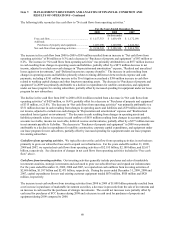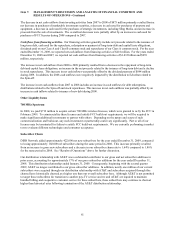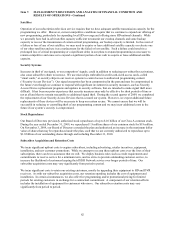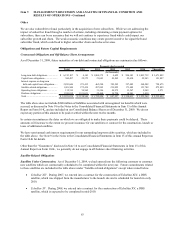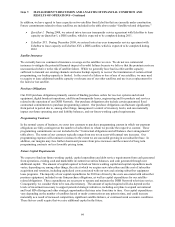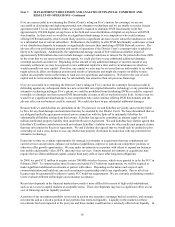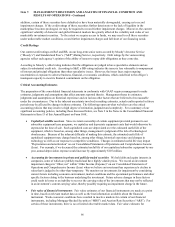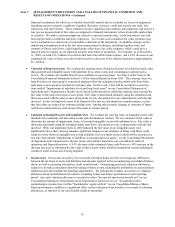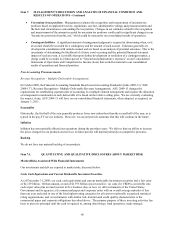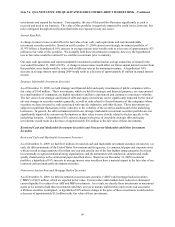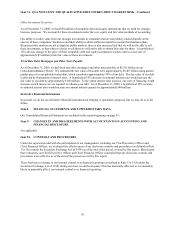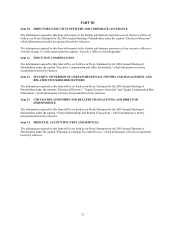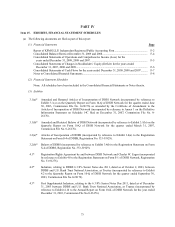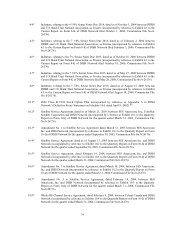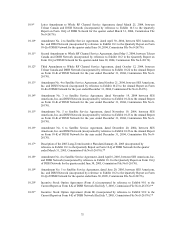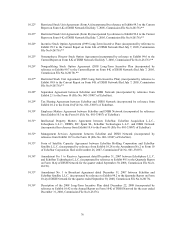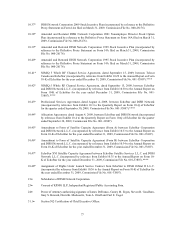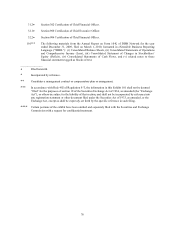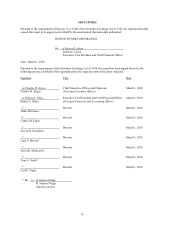Dish Network 2009 Annual Report Download - page 80
Download and view the complete annual report
Please find page 80 of the 2009 Dish Network annual report below. You can navigate through the pages in the report by either clicking on the pages listed below, or by using the keyword search tool below to find specific information within the annual report.Item 7A. QUANTITATIVE AND QUALITATIVE DISCLOSURES ABOUT MARKET RISK - Continued
70
Other Investment Securities
As of December 31, 2009, we had $50 million of nonpublic debt and equity instruments that we hold for strategic
business purposes. We account for these investments under the cost, equity and fair value methods of accounting.
Our ability to realize value from our strategic investments in companies that are not publicly traded depends on the
success of those companies’ businesses and their ability to obtain sufficient capital to execute their business plans.
Because private markets are not as liquid as public markets, there is also increased risk that we will not be able to sell
these investments, or that when we desire to sell them we will not be able to obtain fair value for them. A hypothetical
10% adverse change in the price of these nonpublic debt and equity instruments would result in a decrease of
approximately $5 million in the fair value of these investments.
Fixed Rate Debt, Mortgages and Other Notes Payable
As of December 31, 2009, we had fixed-rate debt, mortgages and other notes payable of $6.192 billion on our
Consolidated Balance Sheets. We estimated the fair value of this debt to be approximately $6.407 billion using quoted
market prices for our publicly traded debt, which constitutes approximately 99% of our debt. The fair value of our debt
is affected by fluctuations in interest rates. A hypothetical 10% decrease in assumed interest rates would increase the
fair value of our debt by approximately $192 million. To the extent interest rates increase, our costs of financing would
increase at such time as we are required to refinance our debt. As of December 31, 2009, a hypothetical 10% increase
in assumed interest rates would increase our annual interest expense by approximately $44 million.
Derivative Financial Instruments
In general, we do not use derivative financial instruments for hedging or speculative purposes, but we may do so in the
future.
Item 8. FINANCIAL STATEMENTS AND SUPPLEMENTARY DATA
Our Consolidated Financial Statements are included in this report beginning on page F-1.
Item 9. CHANGES IN AND DISAGREEMENTS WITH ACCOUNTANTS ON ACCOUNTING AND
FINANCIAL DISCLOSURE
Not applicable.
Item 9A. CONTROLS AND PROCEDURES
Under the supervision and with the participation of our management, including our Chief Executive Officer and
Chief Financial Officer, we evaluated the effectiveness of our disclosure controls and procedures (as defined in Rule
13a-15(e) under the Securities Exchange Act of 1934) as of the end of the period covered by this report. Based upon
that evaluation, our Chief Executive Officer and Chief Financial Officer concluded that our disclosure controls and
procedures were effective as of the end of the period covered by this report.
There has been no change in our internal control over financial reporting (as defined in Rule 13a-15(f) under the
Securities Exchange Act of 1934) during our most recent fiscal quarter that has materially affected, or is reasonably
likely to materially affect, our internal control over financial reporting.


